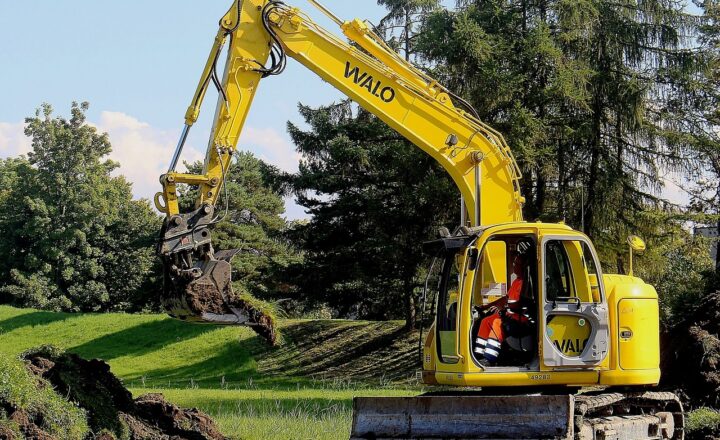The Secrets of the Great Pyramids: How Were They Built with Ancient Technology?
November 12, 2024

The Great Pyramids of Giza stand as a monumental testament to the ingenuity and skill of ancient Egyptian civilization. Even after thousands of years, these colossal structures continue to fascinate and perplex historians, archaeologists, and visitors alike. Have you ever wondered how these magnificent edifices were constructed with the technology available at that time? In this article, we unravel the secrets behind the construction of the Great Pyramids, examining the architectural brilliance, labor, and ancient technologies that made them possible.
1. The Historical Context of the Pyramids
The Great Pyramids were built during Egypt’s Fourth Dynasty, around 2580 – 2560 BC, primarily the Pyramid of Khufu, also known as the Great Pyramid. These incredible structures were conceived as elaborate tombs for the pharaohs and served as a bridge between the earthly realm and the afterlife.
While they are considered one of the Seven Wonders of the Ancient World, the methods and techniques used to construct them have generated significant debate. Historians estimate that around 20,000 to 30,000 skilled workers were involved in the project, working in a highly organized and collaborative system.
2. The Planning Phase: Architectural Genius
The construction of the pyramids began with meticulous planning. Here are some crucial aspects:
- Site Selection: The Great Pyramid is strategically positioned on the Giza plateau, which offered solid rock as a foundation and visibility from far distances, emphasizing the pharaoh’s power.
- Orientation and Alignment: The pyramids are exceptionally aligned, facing true north with an accuracy of 0.067 degrees. This was achieved using the stars and sun as guides, showcasing the Egyptians’ advanced understanding of astronomy.
- Design and Structure: Early pyramids evolved from step pyramids to true pyramids. The Great Pyramid’s design is an intricate combination of math and geometry. Its four sides are precisely oriented to the cardinal points, and harmony in proportions reflects a spiritual dimension in their construction.
3. The Role of Laborers
Surprisingly, recent findings indicate that the majority of laborers were not slaves, as commonly believed. Instead, they were skilled workers, masons, and artisans, likely motivated by a sense of duty, compensation, and respect from society.
Here are key points regarding the labor force:
- Workforce Organization: Workers were organized into teams and worked in rotating shifts. They were given food, shelter, and medical care, emphasizing the importance of their role in society.
- Construction Techniques: Using simple tools such as wooden sleds and stone hammers, the laborers would transport massive limestone and granite blocks from quarries, sometimes several kilometers away. It is speculated that they used lubricated sleds to ease transportation over sand, especially during the Nile floods when the lands were soft.
- Work Conditions: Contrary to popular belief, work conditions for the laborers seem to have been relatively humane considering their time. Recent studies indicate that they received medical care and were well-fed, which helped maintain their health for such labor-intensive work.
4. Ingenious Construction Techniques
Ancient Egyptians used various innovative techniques to build the pyramids:
- Ramp Systems: Theories suggest that the Egyptians likely used a series of ramps, inclined planes, or zig-zag pathways to elevate stone blocks to the heights needed. Some believe they employed a straight ramp, while others contend a circular or spiraling ramp around the pyramid as it rose would have been more effective.
- Lever and Rollers: Workers might have used levers to maneuver the stones into position and could have placed wooden rollers underneath them to make the task easier. This would have significantly reduced the manpower needed for transportation and positioning.
- Limestone Coating: The Great Pyramid was originally covered in highly polished Tura limestone, reflecting sunlight and giving it a brilliant appearance. Some believe they constructed scaffolding to reach the higher levels during this finishing process.
5. The Mysteries that Remain
Despite extensive research and exploration, certain aspects of pyramid construction still elude us. Questions still linger, particularly regarding:
- Transporting Materials: How did workers transport over 2.3 million stone blocks while minimizing the wear and tear on pathways, especially when some stones weigh as much as 2.5 tons?
- Precision Engineering: How did they achieve such remarkable precision with the limited technology they possessed? The joints between stones were so tight that a blade would scarcely fit between them, indicating advanced knowledge of engineering.
- Final Design and Purpose: What do the pyramids’ architectural features reveal about ancient Egyptian beliefs? Were they purely tombs, or did they have other astronomical or spiritual purposes?
Conclusion: A Testament to Human Ingenuity
The Great Pyramids of Giza stand as enduring symbols of ancient Egyptian culture and technological prowess. Their construction reflects advanced planning, organization, and ingenuity that exceeds modern assumptions about their capabilities. While some mysteries remain, the remarkable skill and dedication of the ancient workers formed the backbone of these monumental architectural achievements. The lessons from their efforts continue to teach us about determination, collaboration, and the human spirit’s ability to create lasting legacies.
By unraveling the secrets behind the Great Pyramids, we not only honor the past but also learn from it, inspiring future generations to innovate and explore beyond our perceived limitations.






